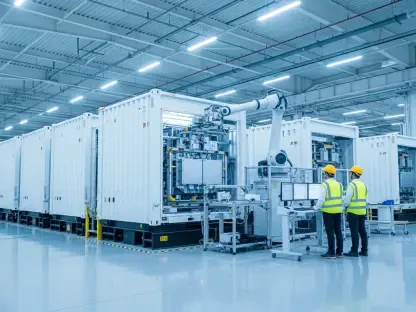In an era where sustainability is more than just a buzzword, the United Kingdom has embarked on an ambitious initiative called the HySpeed Hydrogen project. Advocates see hydrogen as a miracle fuel of the future, but with costs reportedly hovering around £9 to £10 per kilogram, the pressing question is whether these lofty aspirations are grounded in fiscal reality.
Charting the Course: Why HySpeed Matters
The HySpeed project aspires to be a cornerstone of the UK’s clean energy future, with promises of substantial investment and the creation of new jobs. The initiative pledges to align with the nation’s climate goals by scaling up hydrogen production to support one gigawatt of green energy by 2030. This endeavor is embedded in a broader context where renewable energy and clean technology are not just desirable but essential. Political leaders see this as a step in fulfilling both national ambitions and global commitments to reduce emissions substantially.
Navigating the Obstacles: Realities of Hydrogen Production
While the potential benefits are enticing, the project faces considerable challenges. The high production costs of green hydrogen are a formidable barrier, especially when juxtaposed with the relatively low prices of alternative energy sources like batteries. Additionally, the logistical demands of creating a comprehensive hydrogen infrastructure present significant roadblocks. Similar initiatives, like those in the Netherlands, have stumbled due to such practical difficulties, serving as reminders of the difficulties that lie ahead.
Perspectives from Industry Experts
Organizations such as JCB, Wrightbus, and Centrica are heavily invested in the HySpeed initiative. Executives from these companies offer valuable insights, highlighting hydrogen’s potential, especially in transportation sectors less suitable for electrification. Experts in renewable energy stress that for hydrogen to be feasible, it must complement rather than compete with other technologies. Industry insiders frequently debate how hydrogen might fit into existing energy ecosystems, emphasizing its suitability for specific sectors over others.
Redirecting Efforts: Future Strategies for Hydrogen Use
To capitalize on hydrogen’s potential, the focus should shift toward targeted applications where it can truly excel, particularly in heavy industries where electrification is not feasible. Government interventions in the form of subsidies and regulatory frameworks could better support this transition. Aligning hydrogen usage within a broader, balanced energy strategy is crucial, ensuring it harmonizes with other renewable sources and does not overshadow more immediate, cost-effective options like batteries.
In conclusion, the UK’s HySpeed Hydrogen initiative marks a bold step into the future of energy. As the country advances, many realize the necessity of focusing on specific sectors where hydrogen’s use is most practical, such as in industries that leverage its unique advantages. Companies and policymakers, reflecting on the initiative’s progress, remain cautious to ensure future projects harmonize with a comprehensive energy approach, balancing ambition with practical reality.









